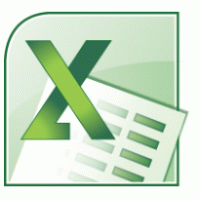 Back to jkp-ads.com |
Ron de Bruin
|
|
 Back to jkp-ads.com |
Ron de Bruin
|
|
Ron de Bruin decided to remove all Windows Excel content from his website for personal reasons. If you want to know why, head over to rondebruin.nl.
Luckily, Ron was kind enough to allow me to publish all of his Excel content here.
Most of these pages are slightly outdated and may contain links that don 't work. Please inform me if you find such an error and I'll try to fix it.
Kind regards
Jan Karel Pieterse
Important : Follow the steps on the page first before you start with the examples and tips on this page : Change the Ribbon in Excel 2007 and up
Also check out the index page for Ribbon and QAT stuff : https://jkp-ads.com/rdb/win/section2.htm
Note: If you are a Mac user start here : Change the Ribbon in Mac Excel 2016 and up
You can download 8 Excel files here with basic RibbonX examples for Excel
2007 and up
Download Example Excel files Last Updated :
10-Jan-2017
1: Add custom group in built-in tab.xlsm
2: Custom tab for Favorite Groups and
buttons.xlsm
3: Custom tab for your favorite macros part 1.xlsm
4: Custom
tab for your favorite macros part 2.xlsm
5: Dictator(1).xlsm
6: Dictator(2)
With_Custom_Tab.xlsm
7: Disable-Visible-Repurposing.xlsm
8: Office Button or Backstage.
When
you create your menus with Application.CommandBars in Excel 97-2003 you have
code to create the menu and delete the menu. In Excel 2007 and up when you
use RibbonX to customize the Ribbon this is different, when you close or
deactivate the workbook it will automatic remove your customizations.
The files in the download are working OK in Excel 2007 and up.
If you
want to load different RibbonX for Excel 2007 and Excel 2010 and up see :Load
different RibbonX when opening file in Excel 2007 or 2010 and up
Note: For example files for changing the Backstage(File) visit my Backstage page
You see in the RibbonX that I use for example idMso="VisualBasic" to point to a built-in control.But how do you find the names of the controls ?
Download this file from the Microsoft site: Office 2010: Office Fluent User Interface Control Identifiers
Download this file from the Microsoft site: Office 2013: Office Fluent User Interface Control Identifiers
Download this file from the Microsoft site: Office 2016: Office Fluent User Interface Control Identifiers
See also github : https://github.com/OfficeDev/office-fluent-ui-command-identifiers
Excel 365 idMso's (9-July-2020), in the example files I duplicate every group in the Ribbon.
Note: Will add the Draw tab soon
Download Excel 365 example files
Tip: ContextMenu Add-in created for Office 2010 (seems to work OK in 2013 and 2016)
ContextMenus Add-In for Office 2010 : This Com add-in from Microsoft add the idMso name of the ContextMenu on the bottom of every Context menu(Right click menu's). This is a very easy way for developers to find the idMso of the menu so they can use it in the RibbonX. Note: Only In 2010 and up you can change the ContextMenu's with RibbonX. The add-in also seems to work OK in 2013 and higher. Download Microsoft ContextMenusaddin
See this example page : Customizing Context Menus in Microsoft Excel
You can see in the RibbonX that I use imageMso="HappyFace"
to use the built-in image I want. But how do you find the names of all
the images?
Download this file from the Microsoft site Office 2010 : Icons Gallery
As far as I know there is no Icons Gallery for Office 2013 and 2016.
Or try this add-in from Jim Rech
Control Image Add-in for Excel 2007 and Excel 2010 but also working in
2013 and higher
(made by Jim Rech). Jim's add-in displays the images on buttons in the
Ribbon (by adding a new tab), he has tried to remove most or all duplicate
images and, in the case of Excel 2007, added a few images not in the MS
list.
Download it from
my site : File date (18-Nov-2015)
You can use this VBA example posted by Jim Rech to Hide/Show the whole Ribbon and the QAT.
Sub HideRibbon()
Application.ExecuteExcel4Macro "SHOW.TOOLBAR(""Ribbon"",False)"
End Sub
Sub ShowRibbon()
Application.ExecuteExcel4Macro "SHOW.TOOLBAR(""Ribbon"",True)"
End Sub
Or you can use this to Toggle the view of the Ribbon
and QAT
Application.CommandBars.ExecuteMso
"HideRibbon"
Or you can use this to Toggle the view of the Ribbon only
Application.CommandBars.ExecuteMso "MinimizeRibbon"
You can download a zip file with two basic examples below.